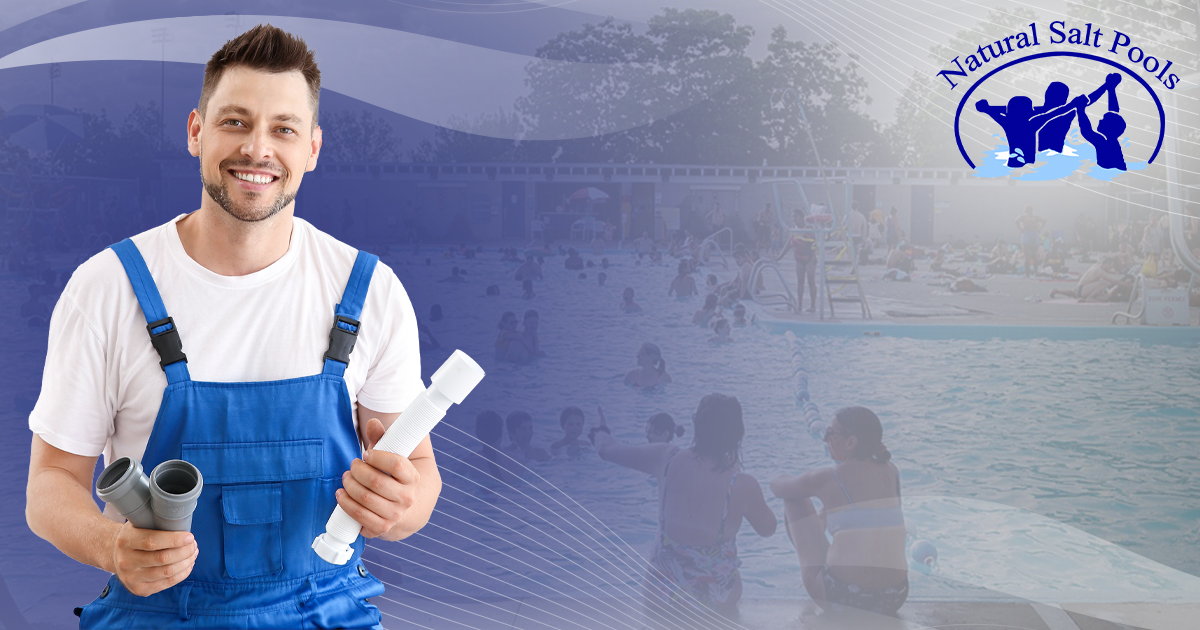Commercial pools are designed for public or commercial purposes and are subject to specific regulations and safety standards to ensure the well-being of users. These pools are found in various establishments such as hotels, resorts, apartment complexes, sports facilities, water parks, fitness centers, and other public or community spaces. There are various types of commercial pools designed to meet specific needs and preferences. Here are some commercial swimming pool sizes and types.
- Hotel/Resort Pools: These pools are often found in hotels and resorts, catering to guests’ recreational needs. They are typically larger in size to accommodate a higher number of guests. They can range anywhere from 25 meters to 50 meters in length, with widths varying based on the design and available spaces.
- Apartment/Condominium Pools: Pools in residential complexes serve as a communal space for residents. They can vary in size and design, ranging from basic lap pools to more elaborate pools with sundecks, cabanas, and hot tubs. They can range from small lap pools measuring around 15 meters in length to larger pools that may be 25 meters or more in length.
- Public/Community Pools: These pools are open to the general public and are often found in recreational centers, sports complexes, or community parks. They can range from 25 meters to 50 meters in length, adhering to competitive swimming standards. They are built to accommodate a larger number of people and may include features like diving boards, water play areas, and lap lanes.
- Water Park Pools: Water parks feature a variety of pools designed for entertainment and amusement. They can include wave pools, lazy rivers, water slides, interactive splash pads, and other attractions suitable for families and thrill-seekers.
- Health Club/Fitness Center Pools: Pools in fitness facilities are typically designed for exercise, swimming laps, and aquatic fitness classes. They may have lanes for lap swimming, varying depths, and amenities like hot tubs or saunas. They are often around 25 meters in length,but can also be shorter in smaller facilities.
- Sports Complex Pools: These pools are specifically designed for competitive swimming and are commonly found in sports complexes, schools, and universities. They adhere to regulations and standards for swim meets and may have additional features like starting blocks and timing systems. Olympic-sized pools are 50 meters in length, while other sizes can range from 25 meters to 50 meters.
- Rooftop Pools: Often seen in urban settings, rooftop pools are located on the top floors of buildings, offering stunning views. They can range from compact plunge pools to larger pools with lengths of around 15 to 25 meters. They are popular in hotels, restaurants, and luxury residential complexes, providing a unique and upscale pool experience.
- Therapy/Rehabilitation Pools: These pools are designed with therapeutic purposes in mind and are often found in healthcare facilities, physical therapy centers, or rehabilitation clinics. They are equipped with features like warm water temperatures, hydrotherapy jets, and accessibility aids for individuals with disabilities. The length is around 15 to 25 meters.
- Olympic-Sized Pools: These pools meet the specific dimensions and requirements outlined by the International Swimming Federation (FINA) for Olympic competitions. They are used for professional swimming events and training. They are 50 meters in length, have at least ten lanes, and are typically 25 meters wide.
- Dive Pools: Dive pools are specifically designed for diving practice and competitions. They have diving boards, platforms of varying heights, and deep water to ensure the safety of divers. It requires a minimum depth of 4 meters to ensure the safety of divers.
Tips for maintaining commercial pools
Maintaining a commercial pool is essential to ensuring its safety, cleanliness, and optimal functionality. Here are some tips for commercial swimming pool maintenance:
- Regular Water Testing: Test the pool water regularly to ensure proper chemical balance. Monitor pH levels, chlorine or alternative sanitizer levels, alkalinity, and calcium hardness. Follow industry guidelines and adjust chemical levels as needed to maintain a safe and comfortable swimming environment.
- Adequate Filtration and Circulation: Maintain proper filtration and circulation systems to keep the pool water clean and clear. Regularly clean or replace filters, inspect and maintain pumps and motors, and ensure that the water is properly circulated to prevent stagnation.
- Skimming and Cleaning: Regularly skim the surface of the pool to remove leaves, debris, and other floating particles. Clean the pool walls, floor, and tiles using appropriate pool brushes and vacuuming equipment to prevent algae growth and maintain a clean appearance.
- Maintain Proper Water Level: Monitor and maintain the proper water level in the pool. Ensure that it is neither too high nor too low to maintain efficient filtration and prevent damage to the pool equipment.
- Professional Inspection: Arrange for regular professional inspections of the pool equipment, including pumps, motors, filters, and chemical feeders. Address any maintenance or repair needs promptly to prevent further damage or equipment failure.
- Safety Measures: Implement and maintain safety measures such as properly functioning pool drains, safety covers, lifeguard stations (if applicable), and signage indicating rules and regulations for pool use. Regularly inspect safety equipment and ensure that it is in good working condition.
- Proper Chemical Storage: Store pool chemicals in a secure, well-ventilated area according to safety guidelines. Keep them away from direct sunlight, heat sources, and incompatible substances to prevent chemical reactions or hazards.
- Educate Staff: Provide proper training and education to staff responsible for pool maintenance and operation. Ensure they are knowledgeable about water chemistry, pool equipment, safety protocols, and emergency procedures.
- Regular Maintenance Schedule: Establish a regular maintenance schedule that includes tasks such as water testing, cleaning, backwashing, equipment inspections, and chemical adjustments. Adhere to the schedule consistently to maintain the pool’s optimal condition.



Leave a Reply